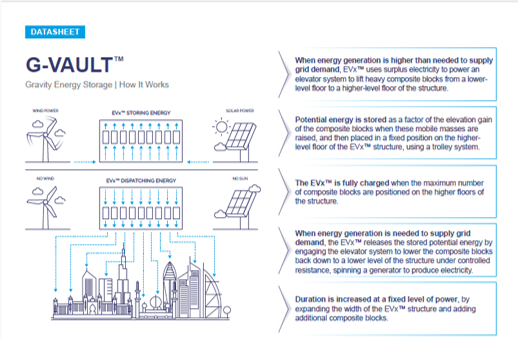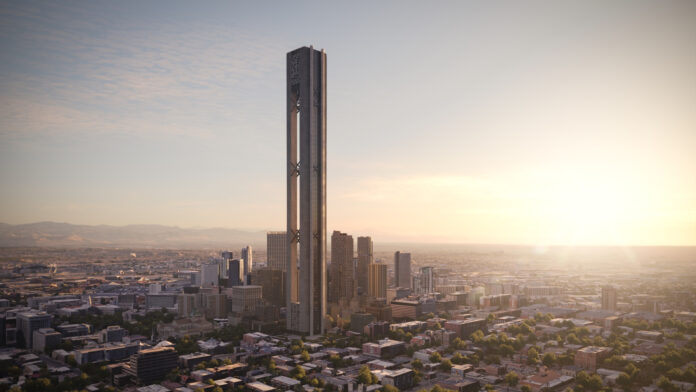I recently read an article written by Will Wade entitled “Big, big batteries.” In it, he describes the architecture firm that designed the Burj Khalifa, the world’s tallest building, is considering turning skyscrapers into renewable, sustainable energy producers.
Skidmore, Owings & Merrill LLP (SOM) is the firm, the architects of One World Trade Center in New York. Among their specialties is tall buildings and now they want to use their height to generate renewable energy using GESS (Gravity Energy Storage Systems). The company recently announced that it is partnering with Energy Vault Holdings Inc., whose G-Vault uses mechanical processes to lift and lower large stone or cement blocks during low-energy electrical demand periods so that buildings can be self-powering.
See the illustration that follows that shows how G-Vault works:

Energy Vault has been designing and building GESS projects for some time. It is one of several companies focused on delivering to the market kinetic energy gravity-based solutions. Recently the company completed its first commercial G-Vault project in Rudong, China, a standalone 150 metre (490 feet) tall building that will generate 25 Megawatts of power for four hours daily. It is the first non-pumped GESS in the world but not the last. China has contracted Energy Vault to deliver 9 G-Vault projects in total that will generate over 3.7 Gigawatt/hours of gravity-assisted energy.
The partnership announced this month between Energy Vault and SOM is to create many more GESS projects. They have four designs that use either heavy blocks or water. One of them is a building taller than the 828 metres (2,716 feet) Burj Khalifa. Seen in the image above, it would be a cylindrical tower standing 1 kilometre (3,280 feet) high with incorporated residential, retail and office space and a giant G-Vault.
Why so tall? Gravity energy works best the greater the drop. The higher these stone weights are lifted when the cost of electricity is low during off-peak periods, the more energy a G-Vault produces and pays for itself. The first project in China is only 150 metres high. It is more of a proof of concept and pilot project. Ideally, the lower limit for a G-Vault is 200 metres (approximately 660 feet). At that height, a building can offset the embodied carbon footprint of the materials used to make it in two to four years. G-Vaults can operate reliably for at least 35 years so they quickly can pay for themselves in both energy savings and the mitigation of carbon emissions.
Tall buildings and towers can be built in many places. When equipped with G-Vaults power can be generated without the need for natural elevation features or a pumped-storage water source. In a multi-use tower, a G-Vault could power it and even nearby buildings and homes. This represents a distinct advantage for Energy Vault’s technology compared to others who are building gravity-assisted renewable projects using pumped storage or abandoned mines.
Thomas Boyes, an analyst with the investment firm TD Cowen notes that permitting and financing this type of project is probably the biggest inhibitor. Getting regulatory approval can take years. That’s why he doesn’t see large-scale adoption of the technology until the 2030s but notes, “It makes sense on paper…There are underlying reasons why buildings will want this technology, but it’s a market that takes a long time.”









